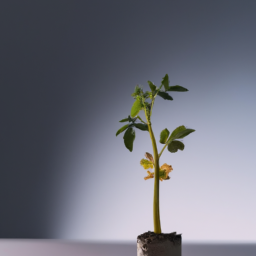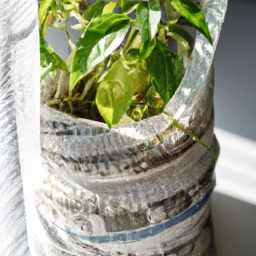
Benefits of using a grow light for indoor plant cultivation
Introduction
Indoor gardening has become increasingly popular in recent years, allowing plant enthusiasts to bring the beauty of nature into their homes. However, growing plants indoors can be challenging due to the limited access to natural sunlight. This is where grow lights come in. Grow lights are artificial light sources that provide the necessary light spectrum for plants to thrive. In this article, we will explore the numerous benefits of using a grow light for indoor plant cultivation.
1. Extended Growing Season
One of the primary benefits of using a grow light is the ability to extend the growing season. With traditional outdoor gardening, your plants are at the mercy of the seasons, limiting your ability to grow certain plants year-round. By using a grow light, you can create an environment that mimics ideal growing conditions, allowing you to cultivate plants regardless of the outdoor climate.
Additionally, grow lights provide a consistent light source, ensuring that your plants receive the necessary amount of light each day. This consistency eliminates the risk of sudden changes in sunlight availability, which can negatively impact plant growth.
Whether you want to grow herbs, vegetables, or flowers, a grow light enables you to enjoy fresh produce or beautiful blooms throughout the year.
2. Customizable Light Spectrum
Plants require different light spectrums at various stages of their growth. Grow lights offer the advantage of customizable light spectrums, allowing you to provide your plants with the specific wavelengths they need.
For instance, during the vegetative stage, plants benefit from blue light, which promotes leafy growth and photosynthesis. On the other hand, during the flowering stage, plants require more red light to stimulate the production of flowers and fruits. With a grow light, you can easily adjust the light spectrum to cater to the specific needs of your plants, maximizing their growth potential.
Moreover, some advanced grow lights even offer full-spectrum options that mimic natural sunlight, providing a balanced combination of red, blue, and other wavelengths. This versatility ensures that your plants receive the optimal light spectrum for each stage of their growth.
3. Increased Plant Growth and Yield
Grow lights have been proven to significantly enhance plant growth and yield. By providing the ideal light spectrum and intensity, grow lights stimulate photosynthesis, the process by which plants convert light into energy. This increased energy production leads to faster growth rates and healthier plants.
Furthermore, grow lights can be positioned closer to the plants compared to natural sunlight, ensuring that light is evenly distributed across the entire plant. This proximity allows plants to absorb more light, resulting in stronger stems, larger leaves, and overall robust growth.
When it comes to flowering and fruiting plants, grow lights play a crucial role in promoting blooming and increasing the yield. With the right light spectrum and intensity, you can encourage the production of vibrant flowers and bountiful fruits, even in the absence of natural sunlight.
Conclusion
Using a grow light for indoor plant cultivation offers a multitude of benefits. From extending the growing season to providing customizable light spectrums and boosting plant growth, grow lights are a valuable tool for any indoor gardener. With the ability to create an optimal growing environment, you can enjoy the beauty and rewards of gardening year-round, regardless of the outdoor conditions. So, invest in a high-quality grow light and watch your indoor plants thrive like never before.
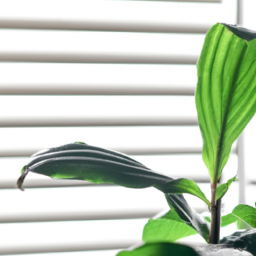
Types of Grow Lights Suitable for Indoor Plants
Introduction
Indoor gardening has become increasingly popular, allowing plant enthusiasts to create lush green spaces within the comfort of their homes. However, not all indoor environments provide sufficient natural light for plants to thrive. This is where grow lights come to the rescue. Grow lights are artificial light sources that mimic the sun’s rays, providing plants with the necessary light spectrum for photosynthesis. In this article, we will explore the different types of grow lights suitable for indoor plants, their pros and cons, and how to choose the right one for your specific needs.
Fluorescent Grow Lights
Fluorescent grow lights have long been a popular choice among indoor gardeners. They are affordable, energy-efficient, and emit a broad spectrum of light that is suitable for most plants. There are two main types of fluorescent grow lights: compact fluorescent lights (CFLs) and high-output fluorescent lights (HOFLs).
CFLs are a great option for small indoor gardens or individual plants. They are compact in size, making them easy to install in tight spaces. CFLs produce less heat compared to other types of grow lights, reducing the risk of plant damage. However, they have a shorter lifespan and lower light intensity compared to HOFLs.
HOFLs, on the other hand, are ideal for larger indoor gardens or plants that require high light intensity. They are more powerful than CFLs and can cover a wider area. HOFLs come in various sizes and wattages, allowing you to customize your lighting setup according to your plants’ needs. However, they are bulkier and generate more heat, requiring proper ventilation and cooling systems.
LED Grow Lights
LED (Light Emitting Diode) grow lights have gained popularity in recent years due to their energy efficiency and versatility. LED lights are highly efficient in converting electricity into usable light, making them an eco-friendly choice. They also have a longer lifespan compared to other types of grow lights, reducing the need for frequent replacements.
LED grow lights are available in various spectrums, including full-spectrum and targeted spectrum options. Full-spectrum LED lights emit a wide range of light wavelengths, similar to natural sunlight, providing plants with all the necessary light for optimal growth. Targeted spectrum LED lights, on the other hand, focus on specific wavelengths that are most beneficial for certain stages of plant growth, such as flowering or fruiting.
One advantage of LED grow lights is their compact size, allowing for easy installation and versatility in positioning. They also produce less heat, reducing the risk of plant damage and eliminating the need for additional cooling systems. However, LED grow lights are generally more expensive upfront compared to other options. Nonetheless, their energy efficiency and long lifespan can result in cost savings in the long run.
High-Intensity Discharge (HID) Grow Lights
HID grow lights are known for their high light output and intensity, making them suitable for large indoor gardens or commercial operations. There are two main types of HID grow lights: Metal Halide (MH) and High-Pressure Sodium (HPS) lights.
Metal Halide (MH) lights emit a blue-white light spectrum, which is ideal for promoting vegetative growth in plants. They are commonly used during the initial stages of plant growth to encourage healthy leaf development. MH lights produce a significant amount of heat, so proper ventilation and cooling systems are necessary to prevent plant damage.
High-Pressure Sodium (HPS) lights, on the other hand, emit a yellow-orange light spectrum, which is beneficial for flowering and fruiting stages. They provide a high light intensity, making them suitable for plants that require intense light for optimal bud formation and fruit production. HPS lights also generate a considerable amount of heat, requiring adequate ventilation and cooling.
HID grow lights are powerful and efficient, but they have a higher energy consumption compared to other types of grow lights. They also require ballasts for proper operation, adding to the overall cost. However, for serious indoor gardeners or commercial growers, HID grow lights can deliver impressive results.
Conclusion
Choosing the right type of grow light for your indoor plants is crucial for their overall health and growth. Fluorescent lights are affordable and energy-efficient, making them suitable for small indoor gardens. LED lights offer energy efficiency, long lifespan, and versatility in spectrum options. HID lights provide high light output and intensity, making them ideal for large-scale indoor gardening. Consider your specific needs, the size of your indoor garden, and the light requirements of your plants when selecting the most suitable grow light. With the right lighting setup, you can create a thriving indoor garden and enjoy the beauty of nature right in your own home.
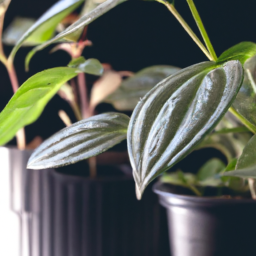
Factors to Consider When Choosing a Grow Light for Indoor Plants
Indoor gardening has become increasingly popular, allowing plant enthusiasts to cultivate a variety of plants in the comfort of their own homes. However, one crucial aspect of successful indoor gardening is providing the right amount and quality of light for your plants. This is where grow lights come into play. In this guide, we will explore the factors you should consider when choosing a grow light for your indoor plants.
1. Light Intensity
When it comes to indoor gardening, replicating the natural sunlight is essential. One of the most critical factors to consider is the light intensity provided by the grow light. Different plants have varying light requirements, so it is important to choose a grow light that can meet those needs.
High-intensity grow lights, such as metal halide (MH) and high-pressure sodium (HPS) lights, are suitable for plants that require high light levels, such as vegetables and flowering plants. On the other hand, fluorescent lights, including T5 and compact fluorescent lights (CFLs), are ideal for plants that thrive in moderate light conditions, such as herbs and leafy greens.
LED grow lights have gained popularity due to their versatility and energy efficiency. They come in various intensity levels and can be adjusted according to the specific requirements of your plants. Additionally, LED lights emit less heat, reducing the risk of burning your plants.
2. Light Spectrum
Plants rely on different wavelengths of light for various stages of growth. When choosing a grow light, it is crucial to consider the light spectrum it provides. The two primary colors of light that plants need are blue and red.
Blue light, with a wavelength of around 400-500 nanometers, is essential for promoting vegetative growth. It stimulates the production of chlorophyll, which is responsible for the green color in plants and is crucial for photosynthesis. Therefore, if you are growing plants primarily for their leaves, such as lettuce or spinach, a grow light with a higher proportion of blue light is recommended.
Red light, with a wavelength of around 600-700 nanometers, is crucial for flowering and fruiting stages. It triggers the production of hormones that promote flowering and fruit development. If you are growing flowering plants or fruits, a grow light with a higher proportion of red light is ideal.
Many modern grow lights, including LEDs, offer full-spectrum lighting, which combines both blue and red light, along with other wavelengths. This provides a balanced spectrum that supports the overall growth and development of plants throughout their lifecycle.
3. Energy Efficiency
Energy efficiency is an important consideration when choosing a grow light, especially if you plan to use it for extended periods. Traditional grow lights, such as MH and HPS lights, tend to consume more energy and generate more heat, resulting in higher electricity bills and potential overheating issues.
LED grow lights, on the other hand, are known for their energy efficiency. They convert a higher percentage of electricity into usable light, minimizing energy wastage. LED lights also produce less heat, reducing the need for additional cooling systems. Although LED grow lights may have a higher upfront cost, their long-term energy savings make them a cost-effective choice.
When selecting an LED grow light, look for models with high energy efficiency ratings, such as those certified by ENERGY STAR. These lights have undergone rigorous testing to ensure optimal performance and energy savings.
Conclusion
Choosing the right grow light for your indoor plants is crucial for their overall health and productivity. Consider the light intensity, spectrum, and energy efficiency of the grow light to ensure it meets the specific needs of your plants. By providing adequate and appropriate lighting, you can create an optimal environment for your indoor garden to thrive.
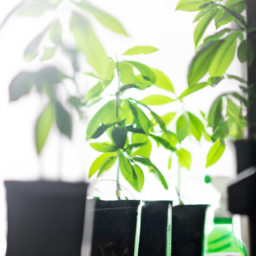
Tips for Maximizing the Effectiveness of a Grow Light for Indoor Plants
Indoor gardening has become increasingly popular, allowing plant enthusiasts to grow a variety of plants regardless of the season or climate. One essential tool for successful indoor gardening is a grow light. A grow light mimics the natural sunlight required for plants to thrive, ensuring they receive the necessary light energy for photosynthesis. To maximize the effectiveness of your grow light and promote healthy plant growth, follow these tips:
1. Choose the Right Type of Grow Light
When it comes to selecting a grow light for your indoor plants, it’s important to consider the different types available. The two most common types are fluorescent lights and LED lights.
Fluorescent lights are affordable and emit a broad spectrum of light suitable for most plants. They are available in two variations: T5 and T8. T5 lights are more efficient and provide higher light intensity, making them ideal for larger plants or those with higher light requirements. On the other hand, T8 lights are more cost-effective and suitable for smaller plants or those with lower light needs.
LED lights, on the other hand, are energy-efficient and have a longer lifespan compared to fluorescent lights. They also emit specific wavelengths of light that can be customized to meet the specific needs of different plants. LED lights are more expensive initially but can save you money in the long run due to their energy efficiency.
Consider the type of plants you are growing and their light requirements to determine the best type of grow light for your indoor garden.
2. Position the Grow Light Properly
The position of your grow light is crucial for the overall effectiveness of your indoor garden. Most plants require light from all angles, so it’s important to position the grow light in a way that provides even coverage.
Hang the grow light above your plants, ensuring it is at the appropriate distance. The distance between the plants and the light source will depend on the type of grow light you are using. As a general rule, fluorescent lights should be positioned 6-12 inches above the plants, while LED lights can be placed slightly closer, around 4-8 inches away.
Regularly adjust the height of the grow light as your plants grow to maintain the optimal distance and prevent burning or stretching of the plants.
3. Follow the Recommended Light Schedule
Plants require a specific amount of light each day to thrive. It’s important to follow a consistent light schedule to mimic natural daylight conditions and promote healthy growth.
Most plants require around 12-16 hours of light per day. To ensure your plants receive the right amount of light, use a timer to automate the light schedule. Set the timer to turn on the grow light in the morning and turn it off in the evening, providing your plants with a consistent light cycle.
Keep in mind that some plants may have specific light requirements, such as a period of darkness or different light intensity during different growth stages. Research the specific light needs of your plants to tailor the light schedule accordingly.
Conclusion
By choosing the right type of grow light, positioning it properly, and following a recommended light schedule, you can maximize the effectiveness of your grow light for indoor plants. Remember to consider the specific light requirements of your plants and make adjustments as necessary. With the right care and attention, your indoor garden will thrive under the nurturing glow of a well-utilized grow light.

Common Mistakes to Avoid When Using a Grow Light for Indoor Plant Growth
Indoor gardening has become increasingly popular, allowing plant enthusiasts to grow a variety of plants regardless of the outdoor conditions. One essential tool for successful indoor plant growth is a grow light. However, even with the best intentions, there are common mistakes that many people make when using a grow light. In this article, we will discuss these mistakes and provide you with a step-by-step guide on how to avoid them.
1. Choosing the Wrong Type of Grow Light
When it comes to grow lights, there are various types available in the market, including fluorescent, LED, and high-intensity discharge (HID) lights. Each type has its own advantages and disadvantages, and choosing the wrong one can significantly impact your plant’s growth. It is crucial to understand the light requirements of your specific plants and choose a grow light that provides the appropriate spectrum and intensity.
Fluorescent lights are affordable and suitable for plants that require low to medium light levels. LED lights, on the other hand, are energy-efficient, long-lasting, and can be customized to provide specific light spectrums. HID lights are powerful and ideal for plants that require high light intensity. Researching the light requirements of your plants and selecting the right type of grow light will ensure optimal growth.
Additionally, it is essential to consider the size of your indoor garden and the coverage area of the grow light. Ensure that the light can adequately cover all your plants to avoid uneven growth and potential damage.
2. Placing the Grow Light Incorrectly
The placement of your grow light is crucial for the overall health and growth of your indoor plants. Many people make the mistake of either placing the light too close or too far from the plants. Both scenarios can have adverse effects on your plants.
If the grow light is too close to the plants, it can cause heat stress and burn the leaves. On the other hand, if it is too far, the light intensity may not be sufficient for proper photosynthesis, leading to weak and leggy growth. It is recommended to follow the manufacturer’s guidelines for the recommended distance between the grow light and your plants.
Additionally, consider the angle of the light. Positioning the light at a slight angle towards the plants ensures that all parts receive sufficient light, promoting even growth and preventing the plants from leaning towards the light source.
3. Neglecting Light Duration and Intensity
Providing the right duration and intensity of light is crucial for the growth and development of your indoor plants. Many beginners make the mistake of either providing too much or too little light.
Each plant has different light requirements, and it is essential to research and understand the specific needs of your plants. Some plants require long periods of light exposure, while others thrive with shorter durations. It is recommended to start with a light schedule of 12-16 hours per day and adjust accordingly based on your plant’s response.
Furthermore, the intensity of the light should also be considered. Some plants require high light intensity, while others prefer lower levels. Adjusting the height or intensity of your grow light can help meet the specific needs of your plants.
Conclusion
By avoiding these common mistakes when using a grow light for indoor plant growth, you can ensure healthy and thriving plants. Remember to choose the right type of grow light, place it correctly, and provide the appropriate duration and intensity of light. With proper care and attention, your indoor garden will flourish, bringing you joy and satisfaction.
Frequently Asked Questions (FAQ)
1. What is a grow light for indoor plants?
A grow light is an artificial light source designed to provide the necessary light spectrum for indoor plants to grow and thrive. It is used when natural sunlight is insufficient or unavailable.
2. Why do indoor plants need grow lights?
Indoor plants require specific light wavelengths for photosynthesis, growth, and flowering. Grow lights mimic natural sunlight, providing plants with the necessary light energy to carry out these processes effectively.
3. What are the different types of grow lights available?
There are several types of grow lights available, including fluorescent lights, high-intensity discharge (HID) lights, and light-emitting diodes (LEDs). Each type has its own advantages and suitability for different plant species and growth stages.
4. Which type of grow light is best for indoor plants?
The best type of grow light depends on various factors such as the specific plant species, growth stage, and available space. LED grow lights are popular due to their energy efficiency, adjustable light spectrum, and longer lifespan.
5. How far should grow lights be from plants?
The distance between grow lights and plants depends on the light intensity and the plant’s light requirements. As a general guideline, most plants thrive when grow lights are placed 12-24 inches away. However, it’s essential to refer to the manufacturer’s recommendations for specific guidelines.
6. How long should grow lights be on for indoor plants?
The duration of grow light usage varies depending on the plant’s needs and growth stage. On average, most indoor plants require 12-16 hours of light per day. Some plants may benefit from a period of darkness for proper rest and growth.
7. Can I use regular household bulbs as grow lights?
While regular household bulbs emit some light, they do not provide the specific light spectrum required for optimal plant growth. Grow lights are specially designed to emit the necessary wavelengths for photosynthesis and plant development.
8. Do all indoor plants require grow lights?
No, not all indoor plants require grow lights. Some plants, such as those tolerant of low light conditions, can survive with natural or ambient lighting. However, for plants with higher light requirements or when natural light is limited, grow lights can significantly enhance growth and health.
9. Are grow lights energy-efficient?
LED grow lights are known for their energy efficiency compared to other types of grow lights. LEDs consume less electricity while providing the same or even better light output. This makes them a cost-effective choice in the long run.
10. Can I use a timer with grow lights?
Yes, using a timer with grow lights is highly recommended. Timers allow you to automate the lighting schedule for your indoor plants, ensuring they receive consistent and appropriate light cycles. This helps maintain plant health and prevents overexposure or underexposure to light.
Dr. Olivia Green is a botanist with over two decades of experience in indoor plant cultivation. She holds a Ph.D. in Plant Biology and has dedicated her career to researching plant behavior in controlled environments. Dr. Green is passionate about helping plant enthusiasts master the art of indoor gardening through her extensive knowledge and practical insights.


